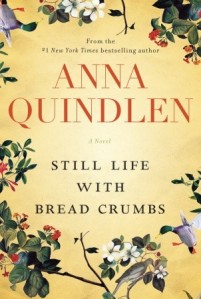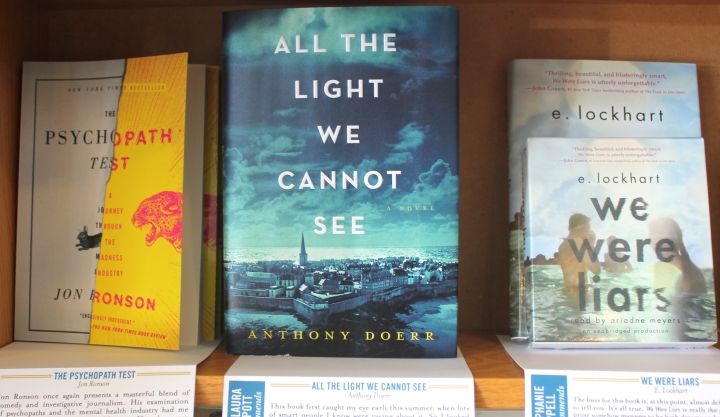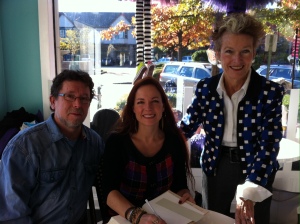“For us, the new man, he is one of two things,” Torassian said eagerly. “First, he is the new worker, a man we instruct and investigate until his probation is complete. But also he is an idea. In the foundry, they make parts. On the line, they make autos. But in Sociological, we make men.”
Anthony Grams (born Antonio Gramazio) comes to America with his family at the start of the 20th century in search of a better life. Bright and ambitious, Tony lands a job at Ford Motor Company in the Sociological Department, responsible for investigating the personal lives of Ford workers and determining if they are worthy of Ford profit-sharing.
It’s a familiar story, of course; many novels and nonfiction accounts have been written about the immigrant experience. Jon Enfield’s novel, The New Men, takes that experience and blends it with the story of the burgeoning auto industry.
The New Men is an ambitious novel — perhaps too ambitious. There are an overwhelming number of characters, some based on actual historical figures (Henry Ford, Samuel Marquis, James Couzens, and many more), some inspired by and loosely based by historical figures, and some completely fictional. Along with its large cast of characters, The New Men attempts to cover the major issues of the early 20th century — race relations, anti-Semitism, industrialization, labor unions, World War I, socialism, immigration . . .
In his author’s note, Enfield (who has a Ph.D. in American literature), describes how he came to write the novel, which he first conceived as an academic article:
How does becoming the right kind of worker for an assembly line both require and demand that someone become a new kind of person altogether? What was Ford Motor Company teaching its workers? . . . What did they learn from streets transformed first by trolley cars, then by automobiles? What did all of that mean while European streets and meadows alike were becoming assembly lines of death, dismemberment, and madness?
I pored over blueprints of the various Ford plans, descriptions of its increasingly international business empire, over schematics of the line, Model T drivers’ manuals and advertising, over the surviving records of Sociological/Educational . . . And I eventually realized it was too big for an article. That, in fact, it was too big and powerful and complex for me to do justice to as anything but a novel.
The story of the “New Men” of the 20th century is indeed “big and powerful and complex”. By telling the story through the eyes of Tony Grams, Enfield attempts to take many threads and tie them together in a single narrative. I’m not entirely sure how successful he is. His subject is fascinating, and obviously very thoroughly researched. Much of his material comes from original documents in the Ford archives. Enfield’s passion for his topic comes through in his writing. The reader can tell that he is bursting with information and ideas he wants to include in the story.
I really appreciate all the period details in the novel, especially the speech patterns and slang. Enfield mentions in his author’s note that he “wanted to get the historical facts and cultural perspectives right but also to capture how different people in Detroit spoke and wrote in the 1910s”. (I’ve frequently been annoyed when characters in historical fiction speak in what I consider 21st century speech patterns.) Enfield says, ” The editors and I promise you that if a particular character writes or says something a certain way, we went to great lengths to verify that a similar, actual person in that time and place might well have written or spelled it that way”.
That being said, I think I would have enjoyed reading about Henry Ford’s “New Men” more if the focus of the novel had been narrower. There was simply too much going on for me to become emotionally invested in any of the characters, even Tony. The book certainly piqued my curiosity about the early days of the Ford Motor Company; I ended up reading the book with my laptop by my side, so I could google things as I read.
I wonder what would have happened if Enfield had decided to write narrative nonfiction about a very specific aspect of immigrant life in Detroit –The Ford Sociological Department, the Girls’ Protective League, even the kosher meat riots. But, as he says, historical fiction has an advantage, since “sometimes history simply refuses to provide a decent love interest or a wryly amusing supporting character”.
If you’re interested in reading The New Men, please know that it’s published by a small publisher, Wayzgoose Press, and is available as an e-book (through Kobo, etc.) and that independent bookstores will order it as a print on demand title.
To read more reviews of The New Men, please visit TLC Book Tours.












 organization, headed by skilled attorney Roger Whitford, offers to take on Malik’s case at no charge, Janae is dubious. Is her son really part of an “endangered species”, as Roger claims?
organization, headed by skilled attorney Roger Whitford, offers to take on Malik’s case at no charge, Janae is dubious. Is her son really part of an “endangered species”, as Roger claims?



